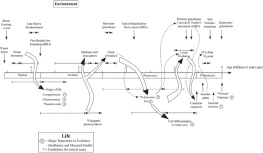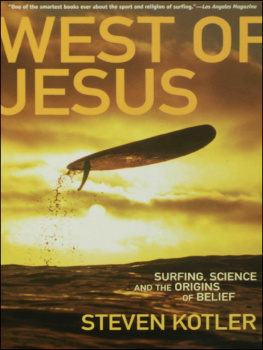Revolutions that made the Earth
Revolutions that made the Earth

Tim Lenton
University of Exeter, UK
and
Andrew Watson
University of East Anglia, Norwich, UK


Great Clarendon Street, Oxford, OX2 6DP, United Kingdom
Oxford University Press is a department of the University of Oxford. It furthers the Universitys objective of excellence in research, scholarship, and education by publishing worldwide. Oxford is a registered trade mark of Oxford University Press in the UK and in certain other countries
Timothy Lenton and Andrew Watson 2011
The moral rights of the authors have been asserted
First published 2011
First published in paperback 2013
Impression: 1
All rights reserved. No part of this publication may be reproduced, stored in a retrieval system, or transmitted, in any form or by any means, without the prior permission in writing of Oxford University Press, or as expressly permitted by law, by licence or under terms agreed with the appropriate reprographics rights organization. Enquiries concerning reproduction outside the scope of the
above should be sent to the Rights Department, Oxford University Press, at the address above
You must not circulate this work in any other form
and you must impose this same condition on any acquirer
British Library Cataloguing in Publication Data
Data available
Library of Congress Cataloging in Publication Data
Data available
ISBN 9780199587049 (hbk.)
ISBN 9780199673469 (pbk.)
Printed in Great Britain by
CPI Group (UK) Ltd, Croydon, CR0 4YY
For our families

This book tells a strange and fascinating storythe entangled histories of life and this planet. Our central idea is that a very few profound revolutions have made the Earth as we know it. Each revolution can be traced back to unlikely innovations in the evolution of life, and each involved radical changes in the non-living environment. For the most part, these revolutions are buried in the dark ages of Earth history, known traditionally as the Precambrian, but there is one exception: what we humans are doing now to transform the planet could be the start of a new revolution.
It is hard not to feel a rather urgent concern about how we are altering the Earth. Are the heralds of the climate change apocalypse right to argue that we are dooming ourselves and much of the rest of the biosphere? Rather than dwell on the present to try and answer this, our approach is to look at the pastand examine the course of previous revolutions of the Earth. Life, in every case, was the instigator. Often the revolutions led to near-catastrophe. Ultimately stability was always restored, but these happy conclusions were not inevitable; if it hadnt been that way, we wouldnt be here to remark upon them. Our contention is that the past offers some valuable lessons that can help us navigate the troubled waters that lie ahead. It also reminds us what an utterly remarkable planet we live on.
The revolutions we trace are best viewed as fundamental transformations of the whole system of life coupled to its planetary environment, which we call the Earth system. What exactly is that? Well, we mean the many processes that interact together to set the living conditions at the surface of the planetatmospheric and ocean composition, temperature and climate, and the life on the land and in the ocean. All-encompassing as this definition is, it nevertheless describes a very coherent system whose properties can only be fully understood by considering it as a whole.
If this sounds very much like James Lovelocks Gaia to you, youre absolutely right. Gaia and the Earth system are for us, close to being synonymous. However, many scientists still react negatively against the idea, or even just the name, of Gaia. Based on a too-literal reading of Lovelocks earlier books and articles, or perhaps instinctively distrustful of such a grandiose theory, they associate it with a teleological viewpoint, an assumption that the biology of the planet somehow knows whats good for it. We disagree with this criticism, but we fear that the name Gaia is so closely tied to Lovelock that it is in a sense defined by his views. Earth system science may be less poetic and resonant, but it is also less personalized and polarized.
Why revolutions that made the Earth? Well, the changes we describe were fundamental ones for life and the planet. They were triggered by new evolutionary innovations, resulting in great and often violent shifts in the environment, which in turn killed off many existing species. Out of this chaos emerged a new system and new life forms. So, in some sense there was a forcible overthrow of incumbents by a new regime. However, unlike human political revolutions there was no foresight or planning on the part of those driving the revolutionat least until now. Revolution also suggests cyclic change, and as we will show, there are theoretical reasons why revolutions have recurred, at long intervals through the planets history.
Weve written for a reader with a science education and a keen interest in how we came to be here, but we have assumed little specialist knowledge. Inevitably we have to cross some complex scientific terrain, and we have put some more technical or non-essential material in boxes alongside the main text, so as not to interrupt the narrative. At the same time we think we have something interesting to say to our colleagues, and we use extensive references to show the links to existing work. The content ranges over the biological and geological sciences, but it is in the synthesis of the two that we think a truly Earth system science emerges. We have attempted such a synthesis, but our belief is that it should still be readable and, we hope, entertaining to the uninitiated.
The idea for this book crystallized in 2003 out of a very special kind of scientific meeting, a Dahlem Conference on Earth system analysis for sustainability. In this week-long retreat in the beautiful outskirts of Berlin, we first began to flesh out the connection between major transitions in evolution and revolutions of the Earth system. Many of those present had an input at the start, especially Ers Szathmry, John Schellnhuber, and Wolfgang Lucht.
The prehistory of this book, owes a great deal to Jim Lovelock. Andrew was one of Jims very few PhD students, and Tim in turn was one of Andrews PhD students, part supervised by Jim. Lynn Margulis has also been an inspiration to both of us, with her adventurous intellect, undying enthusiasm, and passion for teaching. If there is a family of Gaia-inspired researchers out there then we represent two of its generations. As in all families there have been some disagreements (and what we have written may spark more), but we want to make it clear that whatever you think of Gaia, a book like this could not have been written without Lovelock and Margulis founding contributions to Earth system science.
At the same time, there are several others who have played key roles in shaping the subject and our thinking. Mike Whitfield has been a great support to both of us, especially in our time in Plymouth where Andrew worked for many years, and Tim started his PhD. Jim Kasting and Lee Kump, both at Penn State University, have been championing Earth system science as a subject for decades. The late Bill Hamilton and the late John Maynard Smith both helped Tim sharpen his thinking about Gaia and natural selection. Wed also like to thank Dick Holland, Peter Liss, John Raven, and David Wilkinson. There are many others we havent named but you will find their work referenced within.
Next page









